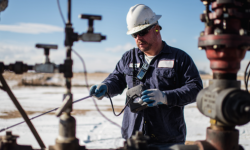Don’t go it alone – the driver assistance systems out there to keep you safe on the road by Letitia Booty. Available from <http://realbusiness.co.uk/fleet/2017/08/14/dont-go-alone-driver-assistance-systems-keep-safe-road/> [August 14, 2017]. Photo: Article Source
Driving a car is a skill many take for granted, but for a fleet driver it can take its toll regularly driving for hours on end. What driver assistance technology is out there to help keep them safe?
Frequent or long-stints of driving can be very wearing on drivers, so fleet owners may wish to take advantage of the driver assistance systems out there to make their lives easier. Here are a few on the market at the moment.
The first highly and fully automated cars are expected to reach the market by 2020-2025, but for the time being we are still a way off driverless vehicles.
Driving a car is a skill many take for granted, but for a fleet driver it can take its toll regularly driving for hours on end. It can be tiring, and that can become dangerous – so what technology is out there to help assist drivers and keep them safe?
Here, we explore some of the most important driver assistance technologies to become available in recent years – from tech that makes drivers’ lives easier such as parking assistance, to tech that can be potential life-saving, such as driver drowsiness detection.
Some of these driver assistance technologies are so part of the fabric of driving today that you could be forgiven for not noticing them. For example, GPS navigation is available these days to any driver with a smartphone – but it is undeniably a driver assistance gadget.
At the other end of the spectrum, there are technologies that are still very new, and some may perhaps even be sceptical, but time will tell if they will become part and parcel of the everyday.
Driver assistance: GPS navigation
One of the nice things about GPS navigation as a driver assistance technology is how easily available it is – you don’t need to have it built in to the car from the get go. You can buy a specialised gadget separately, or even rely on a smartphone, and all can be achieved at a reasonable price since the technology has flooded the market.
For fleet drivers, this is one of the most invaluable pieces of tech – for those doing drop offs or taking new routes every day, potentially thorough towns they’ve never visited before, it can make the work day so much more efficient than pulling over and getting gout the A-Z.
Driver assistance: Integrated braking system
Some vehicles will include some safety features such as autonomous braking. For example, the Alfa Romeo Giulia has an integrated braking system which works in unison with all of the stability and traction systems to ensure the car remains stable in any driving condition.
In addition it has autonomous emergency braking and will prefill the dampers and apply the brakes when it recognises a hazard and can see the brakes have not been applied in time to avoid a collision.
Driver assistance: Adaptive cruise control
Cruise control essentially just controls and maintains the speed a vehicle travels at. Adaptive cruise control now also exists and can maintain a safe distance between your vehicle and the traffic ahead of you, to avoid collisions.
This sort of technology is particularly useful for fleet drivers that spend a lot of their time on motorways, where driving can become a little monotonous and it can be harder to focus – despite the faster speeds.
Driver assistance: Tire pressure monitoring
Another safety feature is the tire pressure monitoring system, which monitors the air pressure inside the pneumatic tires on the vehicle.
The information can be relayed to the driver in real-time as a gauge or a low-pressure warning light. This can be a huge time saver for a driver, so they don’t need to measure their tire pressures before setting off on each journey – they only have to see to it when the pressure needs fixing.
Driver assistance: Automatic parking/ parking sensor
Automatic parking does what it says on the tin, and is a feature of autonomous vehicles – but again, we are still a way off of this being an everyday sight.
Parking sensors and assisted parking however have been available for many years, and can include a screen displaying the back of the vehicle for the driver to reverse park more easily, or a beeping sensor to alert the driver when they are about to back into something.
Driver assistancE: Driver drowsiness
According to Think, the driving safety awareness campaign, almost 20 per cent of accidents on major roads are sleep related, and about 40 per cent of sleep related accidents involve commercial vehicles. If you operate a fleet, solving this should be a top priority.
Driver drowsiness detection systems monitor things such as the driver’s eyes/face, the vehicles position in lanes and steering patterns. These systems can alert driver’s when they are becoming dangerously drowsy, and should take a break.
Don’t go it alone – the driver assistance systems out there to keep you safe on the road by Letitia Booty. Available from <http://realbusiness.co.uk/fleet/2017/08/14/dont-go-alone-driver-assistance-systems-keep-safe-road/> [August 14, 2017]. Photo: Article Source









